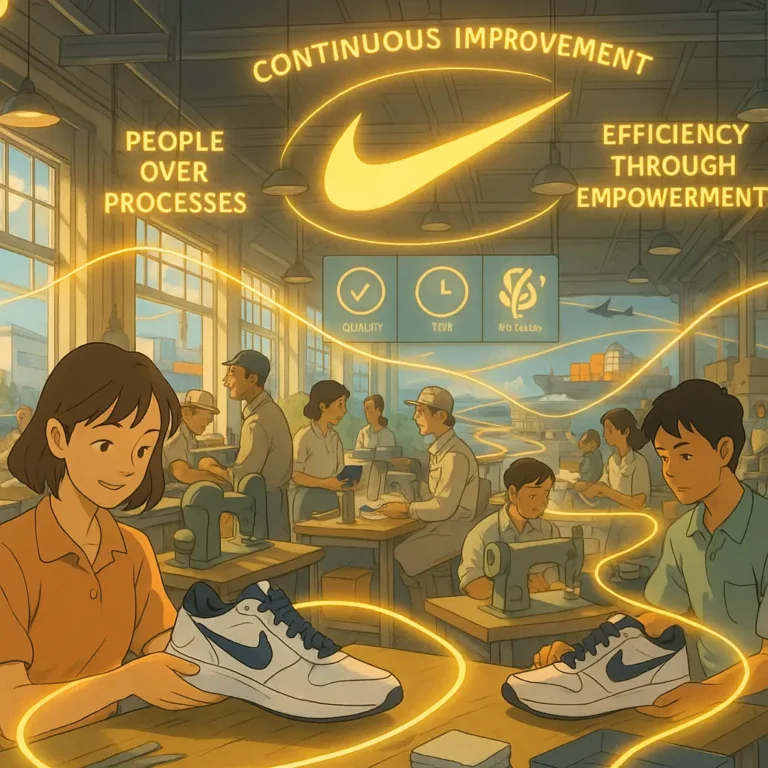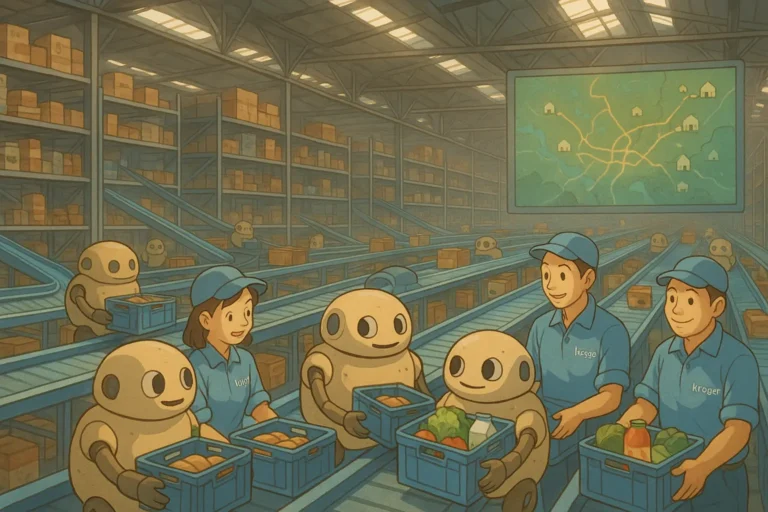
Production scheduling and sequencing are critical aspects of your production planning. They are key to determining how resources are allocated and production orders are processed.
Gone are the days when production was usually a big mess, and organizations sold off the products that managed to come out nicely.
Today, supply chains are more expensive and competitive. The efficient use of resources is a no-brainer, especially if the organization is serious about sustainability.
Optimizing them will be key to the success of your manufacturing and supply chain operations, and in this article, we will discuss the how.
In this article, we will also review what they mean and their benefits to any organization.
What are Production Scheduling and Sequencing?
Production scheduling is the proper allocation of tasks to be done during the production of any product. With production scheduling, you can select or assign a start and stop time for each task in the production process.
On the other hand, production sequencing is the arrangement or order each task in the production process must follow to achieve optimal results for your organization.
Think of it this way: scheduling allows you to allocate the time for production, while sequencing is the order in which the production happens.
If you can get these two right, it will help facilitate order processing and lead times in your overall supply chain management.
Why are production scheduling and Sequencing Optimization Important?
Production scheduling and sequencing play crucial roles in manufacturing and production operations. Here are their key benefits:
1. Optimal Resource Utilization
With production and scheduling, you can efficiently utilize resources across the production process.
Some of these resources will include labour, equipment/infrastructure, and raw materials. It minimizes downtime, reduces idle time, and maximizes the use of available assets.
2. Improved Efficiency
With scheduling and sequencing, you can effectively streamline your production process.
They reduce waiting times, bottlenecks, and unnecessary movement of materials or products.
3. Meeting Customer Demands
You will certainly have your customer’s demands fulfilled on time. They help you manage lead times and delivery deadlines.
This is especially true for scheduling. It allows your production work with the order details and deadline, improving productivity.
4. Inventory Management
Scheduling and sequencing are key elements in managing your inventory levels effectively. When used properly, you can prevent overstocking and stockouts of raw materials and finished goods.
I don’t need to emphasize how much cost you can save for your supply chain from that move alone.
5. Real-time Adjustments
Modern scheduling & sequencing systems often allow for flexibility and real-time adjustments.
Unexpected events can and do happen, but with these two, especially when integrated with technology, you can quickly adapt your production to new demands or requirements.
What are the Differences between Production Scheduling and Sequencing
Although production scheduling and sequencing work hand in hand, they have different goals and priorities in the production process.
Here are some of them.
1. Purpose:
Production scheduling focuses on creating a timetable or plan that specifies when and in what quantities various production tasks, jobs, or orders will be executed.
Sequencing, on the other hand, focuses on determining the particular individual tasks in the production process that should be performed.
2. Complexity
Scheduling factors in the overall goal of the production unit and, as such, can get more complicated.
It is scheduling that directly deals with order processing, lead times, and available resources.
3. Input & Output
You must consider inputs such as orders, demand forecasts, and available resources when scheduling. Sequencing is more concerned with processing time, the availability of the machine, and the priority of the tasks within the production process.
For their outputs, you can expect a detailed production plan and resource allocation from a production schedule, while for the sequencing, you can expect the most effective way to execute the production process by arranging the tasks in the order in which they should performed.
How to Optimize Production Scheduling and Sequencing
Optimizing your production scheduling and sequencing can make your production process much faster. In this section of the article, we will review five strategies for optimizing your production scheduling and sequencing.
1. Continuous Improvement
The question here is…why not? For starters, your competitors are doing it. Secondly, your production process can easily become wasteful and too long.
It seems as if supply chains are innovating every day. Whether it is with technology or with some out-of-the-box thinking. Continuous improvement allows your production process to tap into that movement.
When you continuously improve your processes, your scheduling and sequencing will work better, ensuring optimal value.
2. Demand Forecasting & Inventory Management
For production scheduling and sequencing to work well, they must work with your inventory level and demands. Therefore, having an accurate demand forecast and an inventory management model that works will go a long way toward optimizing both of them.
Think of it this way. You have a demand forecast of 10 and an order cycle time of 2 days. Now you work with that, but halfway through, the planning team realises there is indeed an order of 15. That can impact your production process and, many times, can lead to disruption.
3. Technology/Automation
Today, there are tech solutions for virtually everything in the manufacturing and supply chain management sphere. With tech solutions such as automation, you can eliminate the repetitiveness of the process while allowing it to schedule and sequence your production activities for optimal outcomes seamlessly.
Automation also ensures flexibility and agility in the scheduling and sequencing process. Remember how we talked about wrong demand forecasts impacting your production process? With automation, the system can adjust and continue to produce optimally.
4. Collaboration & Communication
These are vital elements. Without proper collaboration and communication between all relevant stakeholders in the manufacturing process, there will be delays, wrong order processing, and potentially serious downtime, which can impact every aspect of the supply chain operations.
To get around these, proper infrastructures should be in place to facilitate both of these elements. For instance, technology enhances visibility, which in turn helps with communication and collaboration because everyone knows what to do when information flows seamlessly.
5. Sustainability
The goal of sustainability is to minimize waste while enhancing productivity. As you optimize with sustainability in mind, you will notice that each production process improves, even your scheduling and sequencing processes.
When aiming for sustainability, there are key factors to consider, including environmental, societal, and governance. Each of these has unique demands on your production activities, but they also come with amazing benefits.
Factors to Consider When Optimizing Your Production Scheduling and Sequencing
There are three key factors or components of the production process to consider when optimizing scheduling and sequencing.
They are demand variability, capacity, available resources, and technology.
Each plays a distinct role, but your optimization process will suffer if you do not consider any of them, especially technology.
With how the modern supply chain is set up, optimizing any supply chain process without applying technology is difficult.
Although innovation is not always tech, it is mostly tech as well.
FAQs for Optimizing Production Scheduling and Sequencing
Q1: What are some standard algorithms or sequencing principles utilized in production sequencing?
The First-Come-First-Served (FCFS), Shortest Processing Time (SPT), Earliest Due Date (EDD), and Critical Ratio (CR) sequencing rules are frequently used.
Based on particular criteria, these rules assist in determining the proper sequence in which tasks should be completed.
Q2: What role does production sequencing play in cutting manufacturing costs?
Production sequencing can save manufacturing costs by reducing setup delays, idle time, and work-in-progress inventories.
It helps to enhance resource usage, increase throughput, and streamline production processes by optimizing the order of operations.
Q3: What part does technology play in the planning and sequencing of productions?
Automation and optimization of production sequencing and scheduling are significantly aided by technology, especially sophisticated software systems and algorithms.
These tools make real-time data analysis, scenario modelling, and decision assistance possible, resulting in more effective and flexible manufacturing operations.

Obinabo Tochukwu Tabansi is a supply chain digital writer (Content writer & Ghostwriter) helping professionals and business owners across Africa learn from real-world supply chain wins and setbacks and apply proven strategies to their own operations. He also crafts social content for logistics and supply chain companies, turning their solutions and insights into engaging posts that drive visibility and trust.








